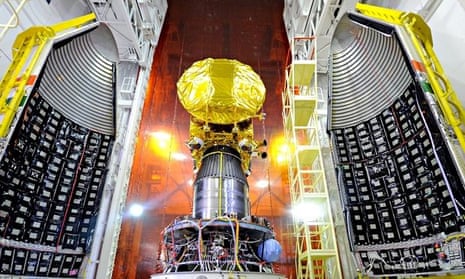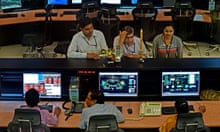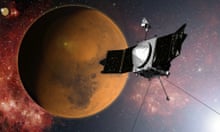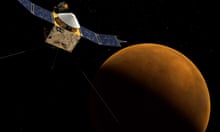An Indian spacecraft will reach Mars next week, an official said on Monday, crowning India the winner of Asia’s race to the Red Planet.
The 1.3-tonne spacecraft, carrying an unmanned probe, is set to enter a Mars orbit after 10 months in space. It is India’s first mission to the planet and will search for evidence of life.
Koteswara Rao of the Indian Space Research Organisation said the spaceraft has travelled almost 666 million kilometres (413 million miles) since its launch from the southern spaceport of Sriharikota last November.
“India will be the first country in the world to insert a spacecraft into the Martian orbit in a maiden attempt if the operation succeeds,” ISRO scientific secretary V. Koteswara Rao told reporters. “And also the first Asian country to reach the Red Planet’s sphere.”
Rao said the spacecraft’s engines will be “woken up” to allow for a course correction on Sunday before its arrival on 24 September. ISRO scientists will also slow down the craft, now travelling at 22.2 kilometres per second, to 2.14 metres per second to allow for a smoother entry into the planet’s orbit.
The cost of the project, at 4.5bn rupees ($70m), is a fraction of the $671m spent on a Nasa spacecraft that also launched last year and is expected to arrive within days of the Indian craft.
India has never before attempted interplanetary travel. More than half of all missions to Mars have ended in failure, including China’s in 2011 and Japan’s in 2003.
Only the US, Russia and the European Space Agency have been successful.
The Mars Orbiter Mission was revealed only 15 months ago by the previous prime minister of India. The timing and place of the announcement – in an Independence Day speech – led to speculation that India was seeking to make a point to China, despite denials from ISRO.
The gold-coloured probe, the size of a small car, will aim to detect methane in the Martian atmosphere, which could provide evidence of some sort of life form on the fourth planet from the sun.
India’s current prime minister, Narendra Modi, has hailed the country’s low-cost space programme, pointing out that a domestically made rocket that launched four foreign satellites into orbit in June had cost less to make than the Hollywood film Gravity.







Comments (…)
Sign in or create your Guardian account to join the discussion